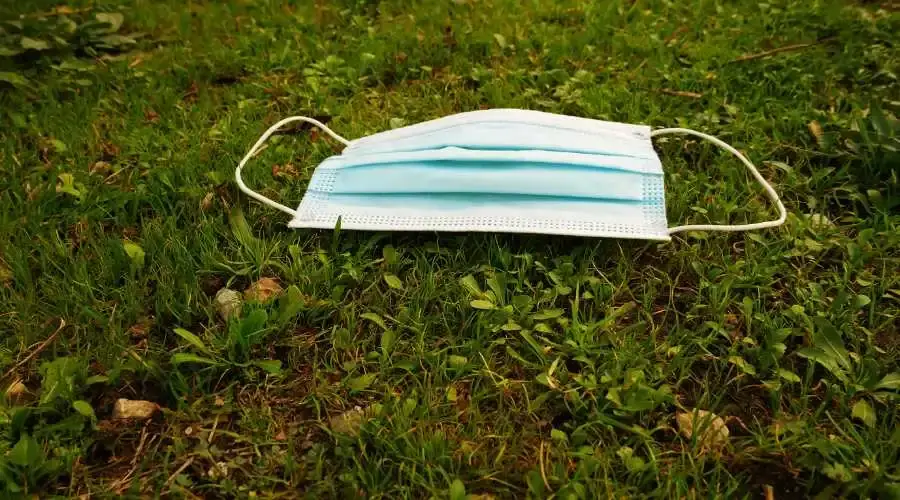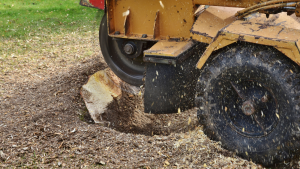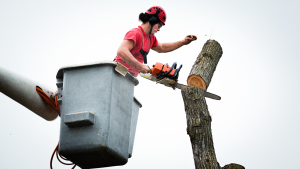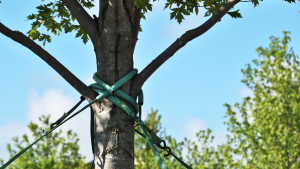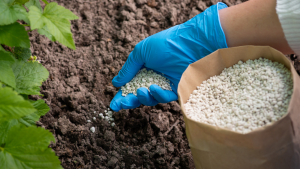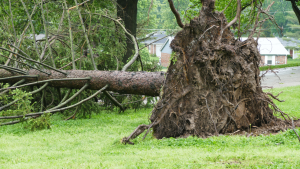If you own a house, you know the difficulty of maintaining lush green grass. Particularly when grass diseases hit, resulting in brown patches or scars with a rusty appearance. Several things might cause grass disease, depending on where you reside. Your lawn may have problems due to various factors, including inadequate or excessive watering. The secret to a successful cure is figuring out which fungal is causing the issue and treating it properly.
The Joliet Tree Service Pros have you covered if you are unaware of what is wrong with your grass or how to repair it. In this post, we will present a thorough lawn disease identification chart for the most prevalent lawn diseases in your region. We will also go through each condition’s symptoms and available therapies.
Lawn Fungus Types
Your lawn may be harmed by several different fungi, which is unfortunate. This fungus may have various effects, from minor ones like a few brown patches to more significant ones like destroying your whole grass. Early detection and treatment are essential for dealing with grass diseases.
What is Brown Patch Lawn Disease?
You probably have brown patch lawn disease if huge, brown patches start to emerge on your grass. Rhizoctonia solani is a fungus that grows in warm, humid environments. Environments Mare the cause of this illness. Spring and autumn are the two seasons when brown patch lawn disease is most prevalent. To spot brown patch lawn disease, keep an eye out for these signs:
- Brown patches that are two to eight feet in diameter and have an oval or circular form
- Brown grass patches encircled by a green border
- blades of grass that seem withered or broken
You may need to appropriately aerate and hydrate your grass to cure brown patch lawn disease. You will need to apply a fungicide if that does not work. Make careful you adhere to the label’s guidelines.
Which Lawn Disease Is Most Common?
One of the most prevalent lawn diseases in the US is dollar spot. Sclerotinia homoeocarpa is the sort of fungus that causes it, and it usually manifests itself in the late spring or early summer. On lawns that have had little fertilization or have been under stress from a drought, dollar spot lawn disease is most prevalent. Look for the following signs of dollar spot lawn disease:
- Small, round brown spots that range in size from one to four inches.
- Brown grass patches with a golden aura around them, blades of grass that seem stunted or broken
To cure dollar spot lawn disease, you must use a fungicide. Follow the label’s directions attentively and apply the fungicide in the early morning or evening hours when it is cooler outdoors.
How to Identify Fairy Ring
Fairy ring lawn disease is caused by the fungus Marasmius oreades and usually appears in late spring or early summer. Fairy ring lawn disease is widespread in shaded lawns or with inadequate drainage. Look for the following signs to detect fairy ring lawn disease:
- Brown patches that are round or ring-shaped and range in size from two to eight feet in diameter
- brown patches of grass encircled by a green ring
- Growing mushrooms or fungus in the affected area
To cure fairy ring lawn disease, the diseased sections of the grass may need to be removed and replaced with healthy sod. You could also be able to treat it with a fungicide. Choose a product that is rated to treat this specific fungus.
Can Pythium Blight Disease Kill My Lawn?
Pythium blight is a grass disease caused by the fungus Pythium. Pythium blight is most frequent in late spring or early summer, and it is most common on shaded lawns or with poor drainage. Look for the following signs to diagnose pythium blight:
- Small brown areas that look to be wet
- Grass patches that become yellow or brown and die
- The afflicted region has a musty odor.
A fungicide must be used to cure pythium blight. The fungicides needed to treat this disease should be applied by a landscaping specialist. If you opt to do it yourself, thoroughly read and follow the directions on the label. You may also need to reapply the fungicide every two weeks until the illness has been eradicated.
Can a Drought Cause Lawn Disease?
Erysiphe graminis is a fungus that causes powdery mildew lawn disease. It is commonplace in late spring or early summer on lawns that are poorly ventilated or have been strained by drought. Look for the following signs to diagnose powdery mildew lawn disease:
- On the grass leaves, there is a white or grayish-white satisfactory growth.
- blades of grass with a stunted or faded appearance
- Brown or yellow grass patches
To treat the powdery mildew lawn illness, you should start by letting your grass come in contact with air and sunlight. Regularly aerate your lawn and cut bushes and trees to let more sunshine in. Overwatering must also be avoided since it may result in various grass diseases.
What is Red Thread Lawn Disease?
The fungus Laetisaria fuciformis causes red thread lawn disease. It usually appears in late spring or early summer and is most frequent on lawns that have been under-fertilized or have been stressed by dryness. Look for the following signs to detect red thread lawn disease:
- Patches of reddish-brown grass
- areas of grass that seem thin or stunted
- Grass blades with little crimson threads
Properly fertilize your grass with the appropriate nitrogen fertilizer content to cure red thread lawn disease. If it does not work, you will have to use a fungicide.
How to Identify Rust Lawn Disease
A fungus called Puccinia graminis causes grass rust disease. It is commonplace in late spring or early summer on lawns that are poorly ventilated or have been strained by drought. Look for the following signs to diagnose grass rust lawn disease:
- little, orange or reddish-brown pustules on grass leaves
- Brown or yellow grass patches
- blades of grass with a stunted or faded appearance
The greatest thing you can do to combat grass rust is fertilizing your lawn appropriately and often. Pick a fertilizer appropriate for your soil type and climate, and follow a plan. If you need clarification about which product to use, get guidance from a nearby landscaping expert.
What is Snow Mold?
Snow mold lawn disease is brought on by a species of fungus called typhus. It most often affects lawns in cold, rainy places, usually in late winter or early spring. Look for the following signs of snow mold lawn disease:
- Grass patches that seem matted down
- little areas of dark or blackish tint on the blades of grass
- The damaged region emits a musty odor.
Remove snow or wet leaves from the grass before treating the snow mold lawn disease. After that, rake and mow the area to hasten its drying. If these steps are ineffective, you may need to apply a fungicide or other treatment.
Why is My Lawn Turning Brown?
A fungus known as Magnaporthe poae is the root cause of the summer patch lawn disease. It most often affects lawns in warm, humid regions in the late summer. Look for the following signs of summer patch lawn disease:
- Brown or yellow grass patches
- blades of grass with a stunted or faded appearance
- The damaged region emits a musty odor.
Since summer patch lawn disease is tough to eradicate, prevention is the best form of therapy. Apply a fungicide to treat the summer spot and stop it from spreading. After that, reapply the solution often to prevent it from returning to your grass.
How to Combat Lawn Diseases
Lawn illnesses may be difficult to recognize and cure, even when you know how! Finally, maintaining a healthy and growing lawn involves a mix of correct mowing at the optimum height, watering, fertilizer, dethatching, aeration, overseeding, and using treatments such as fungicides as necessary. Understanding and recognizing factors conducive to illness development is the most excellent treatment strategy. Changing lawn care procedures is often enough to minimize disease concerns.
Contact your local landscaping pros if dealing with grass diseases alone takes too much time and effort. The Joliet Tree Service Pros can determine the kind of lawn illness damaging your grass and provide a treatment plan to restore its health. Call (815) 476-3395 or make an appointment online now to learn more.
